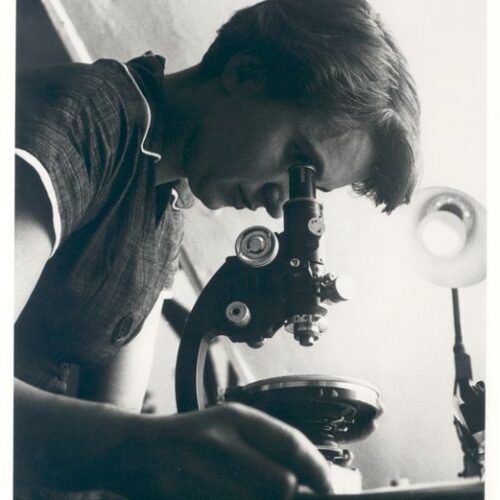

I agree that faith is essential to success in life (success of any sort) but I do not accept your definition of faith, i.e. belief in life after death. In my view, all that is necessary for faith is the belief that by doing our best we shall come nearer to success and that success in our aims (the improvement of the lot of mankind, present and future) is worth attaining… I maintain that faith in this world is perfectly possible without faith in another world.
Rosalind Franklin, in a letter to her father, 1940
Rosalind Franklin was a crystallographer, whose research was crucial to the discovery of the structure of DNA. She also conducted vital work into the tobacco mosaic virus, and was lauded as both necessarily experimental, and rigorously analytical. Franklin identified as culturally Jewish, but was not religious, expressing instead a humanist belief that the most important work was in bettering the world for others, and generations to come. This notion of leaving a positive legacy, with no other concept of an afterlife than that, was central to Franklin’s work as a scientist, and to her own legacy as a human being.
Rosalind Elsie Franklin was born on 25 July 1920 in Notting Hill, London. She was the second of five children, the daughter of a merchant banker. Her father, Ellis Franklin, was a longtime volunteer at the Working Men’s College, as a teacher and later vice principal. The family tradition was one of strict social conscience, as well as of mutual respect, and rigorous intellectual debate. During the 1930s, Ellis Franklin gave a huge amount of time to the Center at Woburn House, established to help Jews fleeing Nazi Germany, and Rosalind herself became a schoolgirl volunteer there.
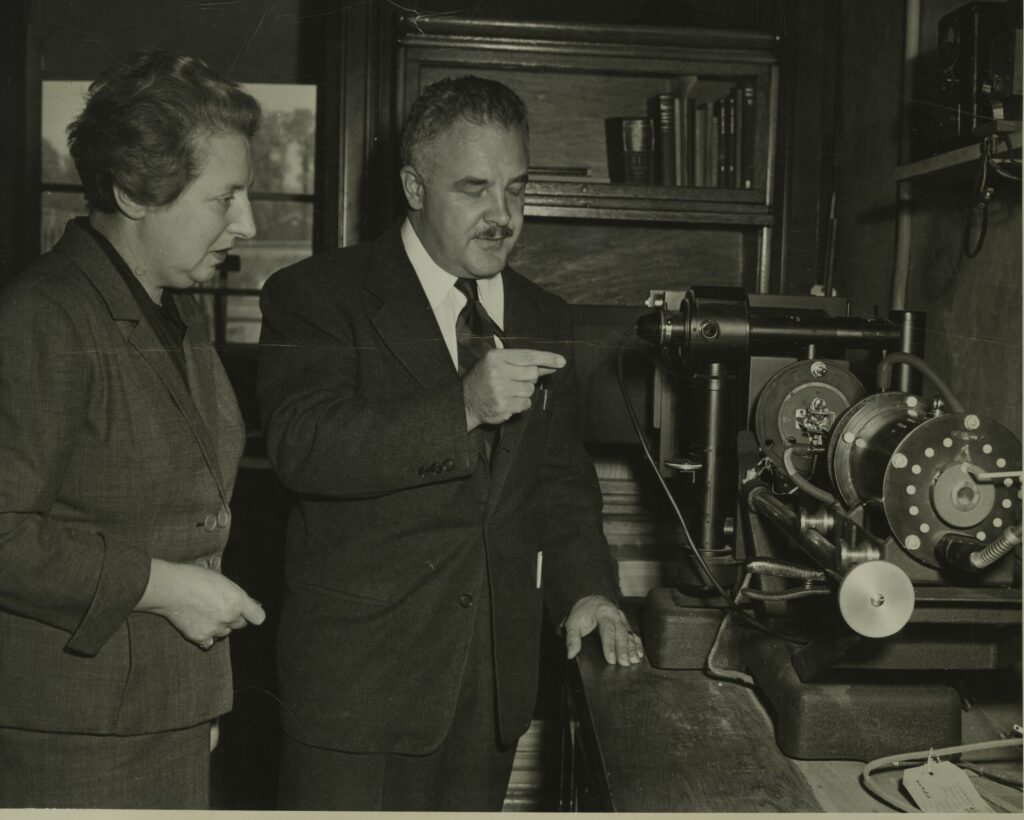
Educated first at St Paul’s Girls’ School, she went on to Newnham College Cambridge, where she read natural sciences. Following work as a research chemist for the Coal Utilisation Research Association, she was awarded her PhD in 1945. It was subsequently, in France, where Franklin developed the skills in X-ray diffraction techniques which would establish her reputation, and bring about her role in the discovery of DNA’s helical structure. Between 1947–1950, she was employed by the Centre National de la Recherche Scientifique, working in the Laboratoire Central des Services Chimiques de l’État in Paris.
In 1950, Franklin was recruited by John Randall of King’s College, London. There, she worked alongside Maurice Wilkins and Raymond Gosling, using X-ray diffraction to study the structure of DNA. In this, her meticulous and groundbreaking work produced the X-ray patterns – and accompanying report – which provided the vital information for Francis Crick and James Watson to publish, in 1953, their DNA model. As Crick would later write, ‘the data which really helped us to obtain the structure was mainly obtained by Rosalind Franklin’.
Scientist and humanist J.D. Bernal wrote that:
As a scientist Miss Franklin was distinguished by extreme clarity and perfection in everything she undertook. Her photographs are among the most beautiful X-ray photographs of any substance ever taken. Their excellence was the fruit of extreme care in preparation and mounting of the specimens as well as in the taking of the photographs.

Her single minded focus and perfectionism led some, notably James Watson in The Double Helix (1968), to portray Franklin as stubborn and difficult, but this view has been vehemently challenged. Franklin’s sister, Jennifer Glyn, has argued that it was only her clearness of principle and passion for her work that could justify anything nearing this characterisation: ‘She could be obstinate—no one would deny that—but only if her sense of justice was roused.’ Franklin’s friend and biographer, Anne Sayre, wrote:
Her choice was science. Her commitment to this choice was total; it was also joyful. Few people ever can have taken more pure delight in what they did with their time and their talents and their energies than Rosalind took in her work.
Franklin’s commitment to reason, and willingness to defend her position, extended also to matters of religion. In a letter to her father written in 1940, Franklin outlined a firmly humanist approach to life, work, and ‘faith’, in which she acknowledged the centrality of faith to purpose, but removed it entirely from the religious. Instead, Franklin’s ‘faith’ was in the capacity of human beings to bring about change and improve the lives of others: ‘the belief that by doing our best we shall come nearer to success’. For Franklin, science was central to this:
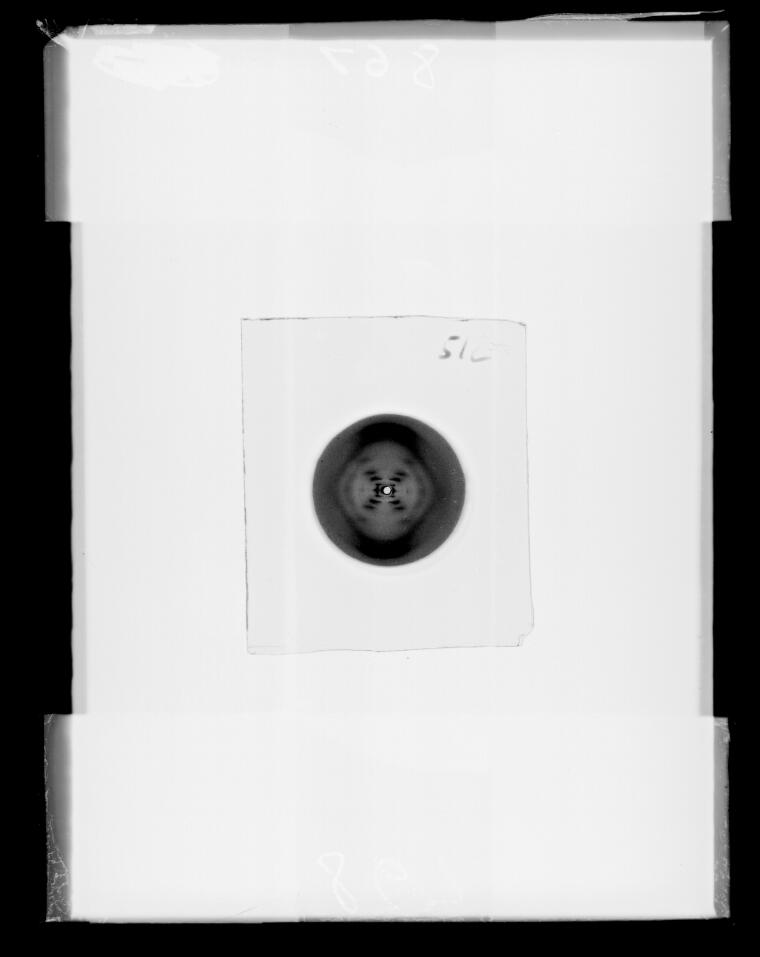
You look at science (or at least talk of it) as some sort of demoralising invention of man, something apart from real life, and which must be cautiously guarded and kept separate from everyday existence. But science and everyday life cannot and should not be separated. Science, for me, gives a partial explanation of life. In so far as it goes, it is based on fact, experience and experiment. Your theories are those which you and many other people find easiest and pleasantest to believe, but so far as I can see, they have no foundation other than they lead to a pleasanter view of life (and an exaggerated idea of our own importance).
However, Franklin did not feel that disbelief in an afterlife – or a god – meant a diminishing of meaning or purpose. ‘Again’, she wrote, ‘I see no reason why the belief that we are insignificant or fortuitous should lessen our faith – as I have defined it.’
Franklin’s life was cut short by cancer at the age of 37. She died on 16 April 1958, wilful – and working – to the end. As Sayre wrote:
She fought death with stubborn courage, made plans for living when the plans were a mockery. She died as she had lived, with a passion for life that she never relinquished.
Rosalind Franklin was a remarkable and influential scientist, an eloquent humanist, and a beloved human being. As well as her exacting, uncompromising nature when it came to research and debate, she was remembered by those who knew her as fun, cultured, and mischievously witty. She enjoyed travelling, walking, cycling, and climbing, passionately desiring to live even as she honestly confronted death. Franklin’s enduring contributions to science, as well as her uplifting expressions of a humanist philosophy, have ensured the very kind of legacy she had absolute faith in pursuing.
Today Rosalind Franklin is posthumously regarded as an icon of scientific inquiry. Since the 1980s, many university departments, schools, and museums, galleries, laboratories, and lecture halls have been named after Franklin. In 2020, the European Space Agency named its Mars rover Rosalind Franklin in recognition of Franklin’s pioneering work on DNA. Many prizes and lectures also bear her name, including Humanists UK’s annual Rosalind Franklin Lecture and Medal, held on International Women’s Day every March, and the Royal Society’s Rosalind Franklin Award, given every October, among others.
Rosalind Franklin is one of four humanist women featured in a set of Humanist Heritage stories and activities for schools: Think for Yourself, Act for Everyone.

The… women on the early ALRA committee were similar in background and outlook. Most of them were active members of […]
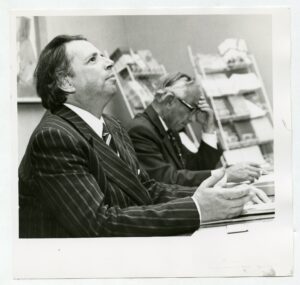
I don’t understand people panicking about death. It’s inevitable. I’m an atheist; you’d think it would make it worse, but […]

We can only see a short distance ahead, but we can see plenty there that needs to be done. Alan […]
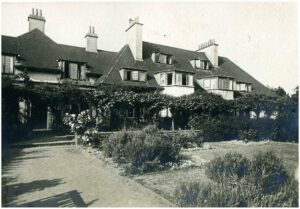
Prior’s Field School was founded in 1902 by Julia Arnold Huxley. Born in 1862, Julia grew up in an intellectual […]